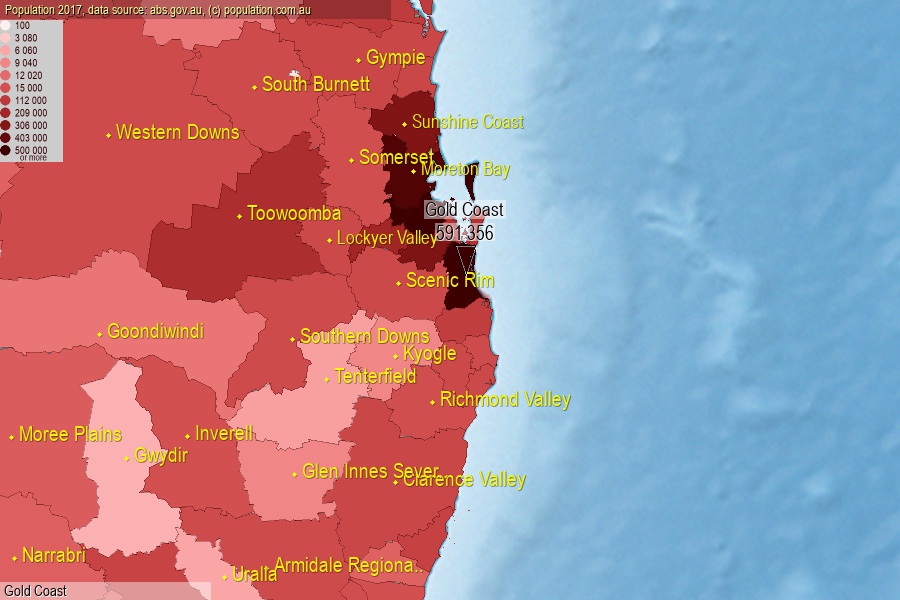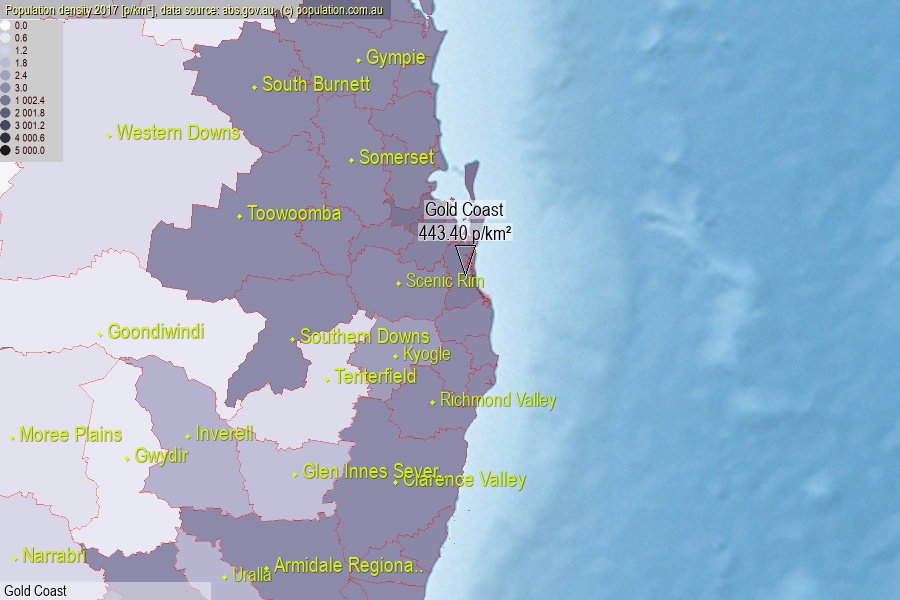 population.com.au
population.com.auLast official estimated population of Gold Coast City (as Local Government Area) was 591 356 people (on 2017-06-30)[2]. This was 2.39% of total Australian population and 11.849% of QLD population. Area of Gold Coast is 1 333.70 km², in this year population density was 443.40 p/km² . If population growth rate would be same as in period 2016-2017 (+2.79%/yr), Gold Coast population in 2025 would be 737 001. [0]



Click to enlarge. Gold Coast is located in the center of the images.
Population [people], population density [p./km²] and population change [%/year] [2]
[1996-2001] +1.27 %/Y
[2001-2002] +3.94 %/Y
[2002-2003] +4.03 %/Y
[2003-2004] +3.28 %/Y
[2004-2005] +2.99 %/Y
[2005-2006] +3.07 %/Y
[2006-2007] +3.75 %/Y
[2007-2008] +3.13 %/Y
[2008-2009] +2.96 %/Y
[2009-2010] +2.08 %/Y
[2010-2011] +1.79 %/Y
[2011-2012] +2.55 %/Y
[2012-2013] +2.34 %/Y
[2013-2014] +1.86 %/Y
[2014-2015] +1.98 %/Y
[2015-2016] +2.43 %/Y
[2016-2017] +2.79 %/Y
[0] Calculated with linear interpolation from officially estimated population
[1] Read more about LGA and Australian Statistical Geography Standard (ASGS) on abs.gov.au
[2] Population data from Australian Bureau of Statistics (Population and density: 2017; change: 2016-2017)
[3] Digital Boundaries: Australian Statistical Geography Standard (ASGS) 2016.